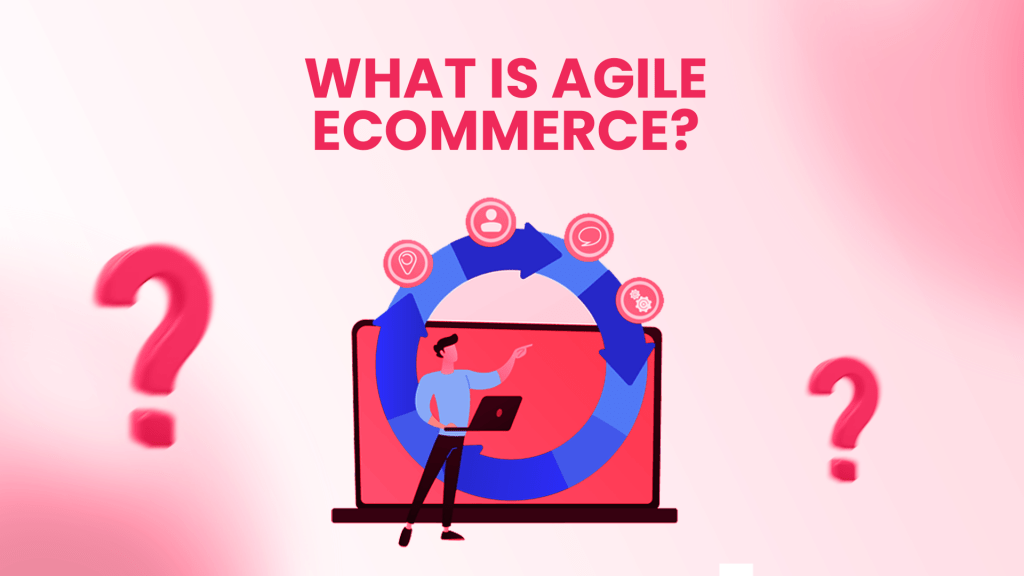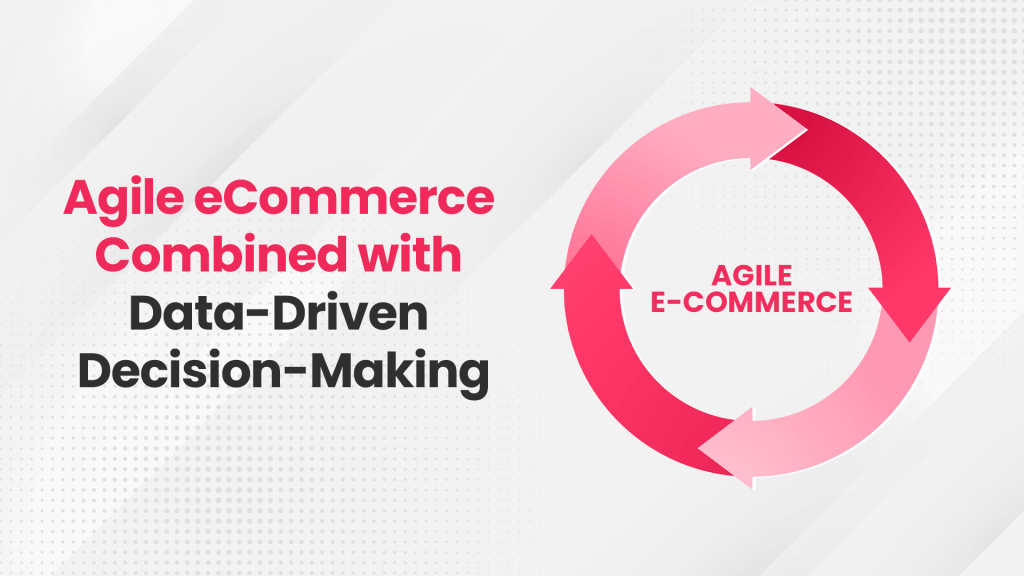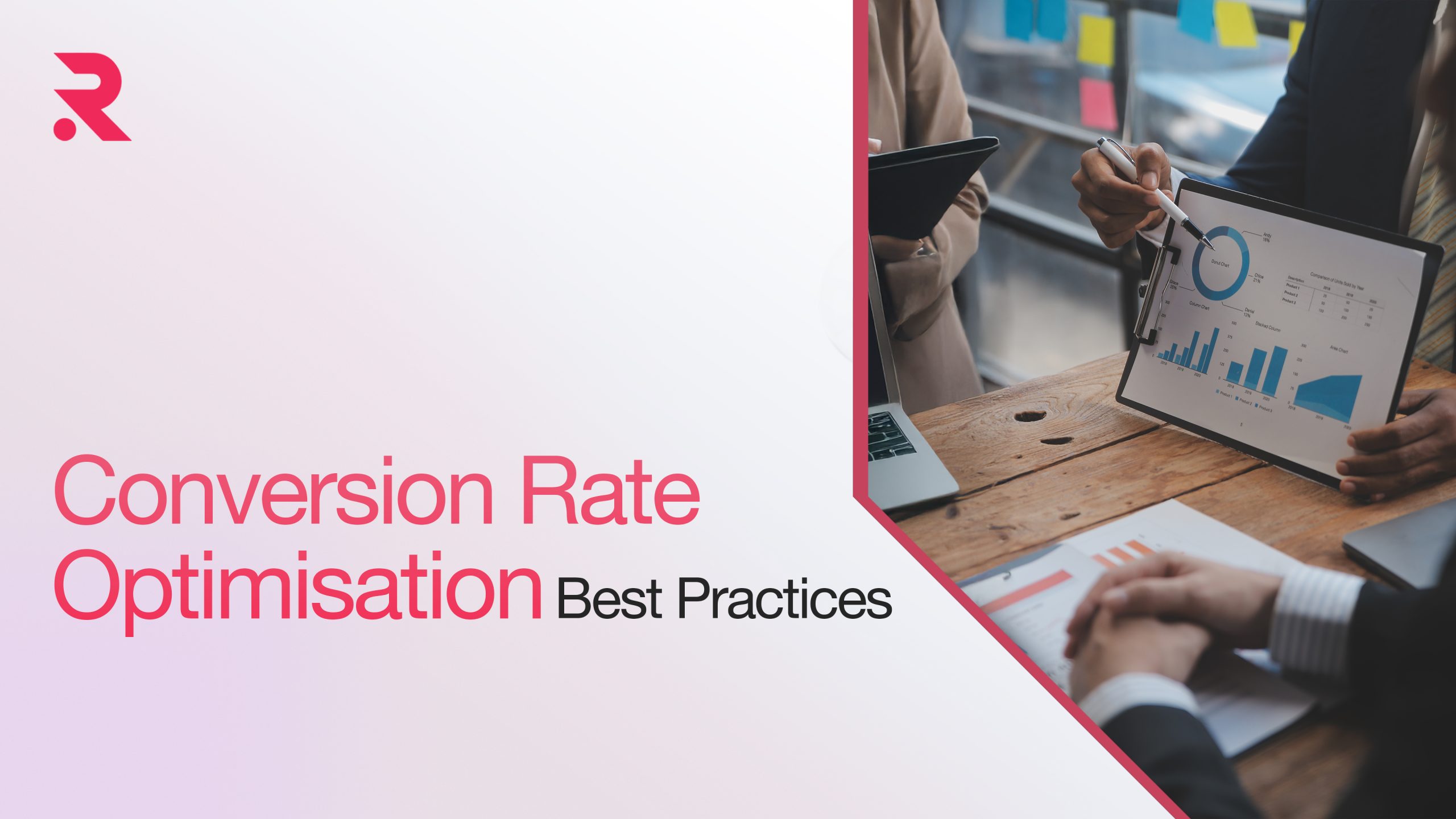
Have you ever wondered what sets apart the soaring success stories in the world of online business? What if there’s a key, a secret almost, that propels certain eCommerce ventures to the stratosphere while others struggle to take flight? Enter the world of agile eCommerce – a dynamic, nimble approach that’s revolutionizing the way online businesses operate.
But what exactly is agile methodology for ecommerce website, and why does it seem to hold the golden ticket to sustained growth and adaptability in the digital marketplace? Let us explore it together!
What Is Agile Ecommerce?
Agile eCommerce is like a dynamic dance of strategies and methodologies within the online business realm, emphasizing adaptability and responsiveness above all. Imagine you’re preparing a meal in your kitchen. Traditionally, you’d follow a recipe step-by-step, measuring ingredients precisely and sticking to a set cooking time. This approach represents the old-school, rigid method—much like how traditional eCommerce used to operate.

Now, imagine agile eCommerce development as a seasoned chef working without a strict recipe. They’re constantly tasting, adjusting flavours, and incorporating new ingredients based on immediate feedback. They might start with a rough idea of what they want to create (a dish, in this case, a product), but they’re not afraid to pivot, tweak, and refine as they go along.
However, in the context of online business, let’s say you’re launching a new product. Traditionally, you might spend months or even years perfecting every detail before unveiling it to the market. In an agile ecommerce website development approach, you might release an initial version, gather feedback from early users, and swiftly incorporate improvements based on their suggestions. It’s the concept of launching a Minimum Viable Product (MVP) and continuously refining it based on real-time data and customer input.
Why use agile ecommerce combined with data-driven decision-making?
Pairing agile eCommerce with data-driven decision-making is like adding rocket fuel to your business strategy. It’s not merely about making quick decisions; it’s about making informed decisions – leveraging the wealth of data available to understand customer behaviour, market trends, and operational efficiencies.

Have a look at the key points on why combining Agile eCommerce with data-driven decision-making is a game-changer:
- Informed Decision-Making: Agile eCommerce relies on rapid iterations and adaptability. When coupled with data-driven decision-making, businesses move beyond guesswork. They use concrete data to drive decisions, ensuring that each step is backed by insights rather than assumptions.
- Understanding Customer Behaviours: Data provides a window into customer behaviour and preferences. By analysing this information, businesses can tailor their strategies to align with what customers truly want, whether it’s in product features, marketing approaches, or user experience enhancements.
- Identifying Market Trends: Data acts as a compass in the ever-shifting landscape of market trends. By leveraging data analytics, businesses can spot emerging trends early, allowing them to capitalize on opportunities swiftly and stay ahead of the curve.
- Enhanced Operational Efficiencies: Data-driven insights aren’t just about customer-facing decisions. They also optimise internal processes. Businesses can identify bottlenecks, streamline operations, and allocate resources more effectively by analysing data related to supply chains, inventory management, and operational workflows.
- Personalised Customer Experiences: Data empowers businesses to create personalized experiences for their customers. By understanding individual preferences, purchase history, and browsing patterns, businesses can tailor their offerings and interactions, fostering stronger customer relationships and increasing loyalty.
- Risk Mitigation and Adaptability: Agile methodologies emphasize adaptability. Data-driven insights mitigate risks by providing a clearer picture of potential pitfalls. Businesses can pivot swiftly based on real-time data, minimizing the impact of market shifts or unexpected challenges.
- Continuous Improvement: Combining agility with data-driven decisions creates a culture of continuous improvement. Businesses can use feedback loops and iterative processes to refine their strategies, products, and services, ensuring they’re always evolving to meet customer needs effectively.
Note:
Want your business to deliver a personalised customer experience? Let RVS Media help you deliver a personalised customer experience by developing, designing, and marketing your website to convey your unique brand story.
Why Should a Startup be Lean and Agile?
Startups are the sprouting seeds in the garden of commerce. To survive and thrive in this competitive ecosystem, they need to be agile – nimble enough to adapt to the unpredictable winds of market shifts. Being lean and agile allows startups to pivot swiftly, test hypotheses rapidly, and iterate their products or services based on real-world feedback, all while conserving resources.
Note:
Looking for effective ecommerce website planning? Contact RVS Media for expert
Agile content marketing frameworks
Content is the heartbeat of eCommerce, and in the world of agile strategies, content marketing deserves a spotlight of its own. Agile content marketing frameworks prioritize quick ideation, experimentation, and optimization. They’re all about delivering value to customers at the right time, in the right format, through the right channels.
Here’s a more detailed breakdown:
- Quick Ideation:
User-Centric Approach: Agile content frameworks start with understanding the audience deeply. By leveraging data and customer insights, marketers identify what resonates with their audience, their pain points, interests, and preferences.
Rapid Brainstorming and Conceptualization: Instead of prolonged content planning cycles, Agile encourages quick brainstorming sessions. Teams generate diverse content ideas and concepts swiftly, fostering creativity and agility. - Experimentation and Iteration:
Small-Scale Testing: Agile methodologies promote the concept of Minimum Viable Content (MVC). Marketers create smaller, testable content pieces to gauge audience reactions before investing heavily.
Continuous Improvement: Based on feedback and performance data, content is iterated upon. Agile teams prioritize continuous enhancements, allowing content to evolve rapidly based on what’s working best. - Optimization and Adaptability:
Real-Time Analytics: Agile content frameworks heavily rely on data analytics. Marketers use real-time performance data to assess content effectiveness. This informs quick decisions on what to optimize or adjust.
Channel and Format Optimization: Agile strategies involve adapting content formats and distribution channels based on audience behaviour. For instance, if a particular segment engages more with videos, the strategy adapts to prioritize video content for that audience. - Agile Workflow Implementation:
Sprints and Scrums: To ensure efficient collaboration and productivity, content teams typically work in short sprints, lasting for a week or two. During these sprints, they plan, create, and review content. Regular scrum meetings ensure alignment and quick decision-making.
Cross-Functional Collaboration: Agile frameworks encourage collaboration among diverse teams—content creators, marketers, designers, and data analysts—to foster diverse perspectives and faster execution.
How to Plan Your eCommerce Projects?
Ah, the nitty-gritty! Planning your eCommerce projects in an agile manner involves a delicate dance between setting a clear vision and allowing flexibility for iterative improvements. From sprint planning to retrospectives, each step is orchestrated to maximize efficiency and responsiveness.

Here’s a detailed breakdown of how to approach it:
Setting a Clear Vision:
- Define Project Goals: Start by clearly outlining the objectives and goals of the eCommerce project. What is the intended outcome? Is it launching a new website, optimizing user experience, or expanding product lines?
- Identify Key Stakeholders: Involve all relevant stakeholders, from marketing and design teams to developers and customer support. Ensure everyone understands the project vision and their roles within it.
Agile Methodology Implementation:
- Sprint Planning: Break down the project into smaller, manageable chunks called sprints. These are short, focused periods, often 1-4 weeks, where specific tasks are planned and executed.
- Backlog Creation: Create a backlog of tasks or user stories that need to be completed. Prioritize these based on importance and impact, ensuring the most critical tasks are addressed first.
- Sprint Execution: During each sprint, teams work on the identified tasks, ensuring they’re completed within the designated timeframe. Daily stand-up meetings help track progress and address any impediments.
Flexibility for Iterative Improvements:
- Iterative Development: Agile eCommerce projects embrace iterative development. This means that at the end of each sprint, there’s a tangible output or deliverable, allowing for continuous improvement based on feedback.
- Adaptive Planning: Remain open to changes. Agile methodologies encourage adaptation based on real-time insights and evolving requirements. If a new market trend emerges or customer needs shift, be ready to adjust the project plan accordingly.
Maximizing Efficiency and Responsiveness:
- Regular Retrospectives: At the end of each sprint, conduct retrospectives to reflect on what worked well and what could be improved. Use these insights to refine future sprints and enhance team efficiency.
- Continuous Communication: Effective communication is pivotal in agile eCommerce projects. Encourage collaboration and transparency among team members to ensure everyone is aligned with the project’s direction.
Testing and Feedback Integration:
- Continuous Testing: Incorporate testing throughout the development process. This ensures that issues are identified and resolved early, preventing bottlenecks or major setbacks later.
- User Feedback Integration: Gather feedback from users or customers during and after each sprint. Incorporate this feedback into subsequent iterations, allowing the project to evolve based on real user experiences.
Documentation and Knowledge Sharing:
- Documentation of Progress: Keep detailed records of progress, decisions made, and changes implemented. This documentation serves as a valuable reference for future projects.
- Knowledge Sharing: Encourage knowledge sharing among team members. Lessons learned and best practices should be shared to foster continuous improvement across projects.
Wrapping Up,
In the ever-evolving landscape of eCommerce, agility isn’t just a strategy; it’s a necessity. The ability to pivot swiftly, respond to market changes, and cater to the dynamic needs of customers is what sets apart the winners from the contenders. Embracing the principles of agile eCommerce and integrating them with data-driven insights, businesses can not only survive but thrive in this digital era.
 Shopify
Shopify

















